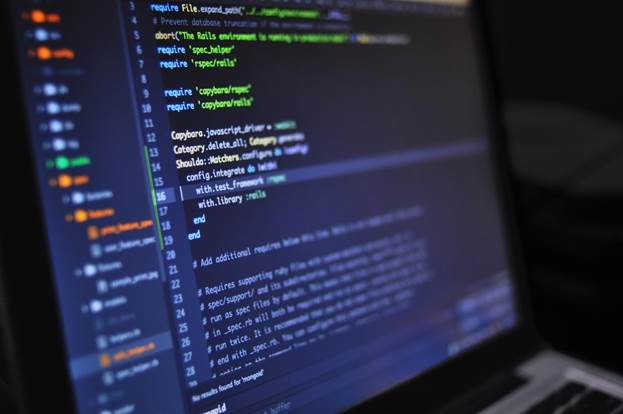tkinter
Released in Tkinter is Python’s most popular GUI (Graphical User Interface) library. This topic explains proper usage of this library and its features.
tkinter: Geometry Managers
Tkinter has three mechanisms for geometry management: place, pack, and grid.
The place manager uses absolute pixel coordinates.
The pack manager places widgets into one of 4 sides. New widgets are placed next to existing widgets.
The grid manager places widgets into a grid similar to a dynamically resizing spreadsheet.
Place
The most common keyword arguments for widget.place are as follows:
x, the absolute x-coordinate of the widget
y, the absolute y-coordinate of the widget
height, the absolute height of the widget
width, the absolute width of the widget
A code example using place:
class PlaceExample(Frame):
def init(self,master):
Frame.init(self,master)
self.grid()
top_text=Label(master,text="This is on top at the origin")
top_text.pack()
top_text.place(x=0,y=0,height=50,width=200)
bottom_right_text=Label(master,text="This is at position 200,400")
top_text.pack()
bottom_right_text.place(x=200,y=400,height=50,width=200)
Spawn Window
if name=="main":
root=Tk()
place_frame=PlaceExample(root)
place_frame.mainloop()
Pack
widget.pack can take the following keyword arguments:
expand, whether or not to fill space left by parent
fill, whether to expand to fill all space (NONE (default), X, Y, or BOTH)
side, the side to pack against (TOP (default), BOTTOM, LEFT, or RIGHT)
Grid
The most commonly used keyword arguments of widget.grid are as follows:
row, the row of the widget (default smallest unoccupied)
rowspan, the number of columns a widget spans (default 1)
column, the column of the widget (default 0)
columnspan, the number of columns a widget spans (default 1)
sticky, where to place widget if the grid cell is larger than it (combination of N,NE,E,SE,S,SW,W,NW)
The rows and columns are zero indexed. Rows increase going down, and columns increase going right.
A code example using grid:
from tkinter import *
class GridExample(Frame):
def init(self,master):
Frame.init(self,master)
self.grid()
top_text=Label(self,text="This text appears on top left")
top_text.grid() # Default position 0, 0
bottom_text=Label(self,text="This text appears on bottom left")
bottom_text.grid() # Default position 1, 0
right_text=Label(self,text="This text appears on the right and spans both rows", wraplength=100)
Position is 0,1
Rowspan means actual position is [0-1],1 right_text.grid(row=0,column=1,rowspan=2)
Spawn Window
if name=="main":
root=Tk()
grid_frame=GridExample(root)
grid_frame.mainloop()
Never mix pack and grid within the same frame! Doing so will lead to application deadlock!
A minimal tkinter Application
tkinter is a GUI toolkit that provides a wrapper around the Tk/Tcl GUI library and is included with Python. The following code creates a new window using tkinter and places some text in the window body.
Note: In Python 2, the capitalization may be slightly different, see Remarks section below.
import tkinter as tk
GUI window is a subclass of the basic tkinter Frame object class HelloWorldFrame(tk.Frame):
def init(self, master):
Call superclass constructor tk.Frame.init(self, master)
Place frame into main window self.grid()
Create text box with "Hello World" text
hello = tk.Label(self, text="Hello World! This label can hold strings!")
Place text box into frame hello.grid(row=0, column=0)
Spawn window
if name == "main":
Create main window object root = tk.Tk()
Set title of window root.title("Hello World!")
Instantiate HelloWorldFrame object hello_frame = HelloWorldFrame(root)
Start GUI
hello_frame.mainloop()
Must Read Python Interview Questions
200+ Python Tutorials With Coding Examples
Other Python Tutorials
- What is Python?
- Python Advantages
- Python For Beginners
- Python For Machine Learning
- Machine Learning For Beginners
- 130+ Python Projects With Source Code On GitHub

